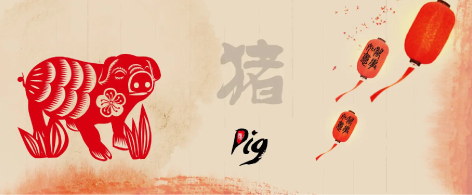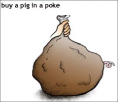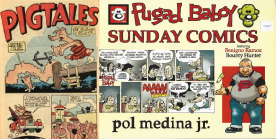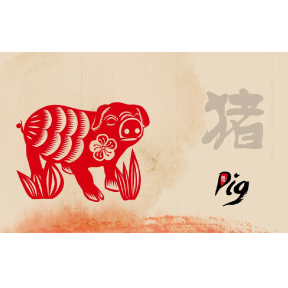
Chinese New Year 2019 marks the Year of the Pig, the 12th animal sign, who answered late to the call of the Jade Emperor for the animals to assemble. The pig symbolizes luck according to Chinese culture. Globally, however, the pig is a domesticated animal and is a common food source. Among Filipinos, there are various names of food items that have pigs in them like lechong baboy or lechon, hopiang baboy, chicharong baboy, among others.
As 2019 marks the Year of the Pig, here are interesting information and references pertaining to the pig.
In most Asian countries the pig is symbol for good luck or prosperity, especially among believers of the Chinese zodiac. In Europe, it stands as symbols in heraldry, while its meat or pork is forbidden food among Muslims.

Figure of speech
Metaphor. The pig often has a negative connotation. When used in a sentence, a pig is someone who eats too much or exhibits gluttony or a greedy person; anyone who is ugly and extremely fat or obese, a dirty or sloppy person, an officer, and a Black or Caucasian
Idioms and expressions. There are interesting expressions in various countries.
• Americans: eating like a pig, sweating like a pig, like a pig in clover; guinea pig, though there is a pig in the phrase, this in reality refers to a species of rodent and not in the pig family; male chauvinist pig, used in the late 1960s, referring to a man who thinks highly of himself and that women are inferior to him.
• British: a pig in a poke, refers to something that one buys without giving enough thought before buying it.
• Spanish: each pig gets its St. Martin, this expression is the counterpart of the English expression “everyone gets their just deserts.” St. Martin’s Day in Spain, which is Nov. 11, is a day for slaughtering pigs.
• German: “as happy as a pig in muck,” an expression which is also popular among the British and the Irish, meaning extremely happy, contented and carefree.
• French: “if the little pigs don’t eat him,” meaning if nothing gets in the way.
• Afrikaans: “to be the pig in the tale,” this means to play the bad guy.

Local lines, phrases, expressions
Filipinos have their own unique pig expressions and famous lines as well:
• “My brother is not a pig!” This is a famous line from multi-awarded actress Nora Aunor’s movie “Minsa’y isang Gamu-gamo,” referring to her brother who was shot dead by an American.
• pork barrel refers to the use of government funds for the benefit of the people or the electorate, but has earned the negative connotation for being misused or abused.
• kababuyan, often refers to any immoral act.
• lechon baboy, roasted pig which is almost always present in feasts or celebrations anywhere in the country.
• kaning-baboy, in English, this is equivalent to a pig slop which consists of a variety of food and scrap food that humans do not eat. In the Philippines, this is mostly any leftover food that is made up of solid and liquid food.
Association with virtues or values or lack thereof
Pig characters in most movies, television shows and literary works are usually depicted as either the heroic main character or as someone standing for ideal human values and virtues.

There’s “Peppa Pig,” a British preschool animated series about a female pig, her family, her different animal friends who are of her age; “Babe” and “Babe: Pig in the City,” a comedy film about a piglet raised as livestock but ended up working as a sheepdog;
Porky Pig, an animated cartoon character in Looney Tunes, famously known for his “Th-th-th-that’s all folks!” at the end of the show; Miss Piggy, a diva-like personality in “The Muppet Show” who speaks French and practices karate; and “Three Little Pigs,” a fable about three little pigs who each built houses of different materials and a big bad wolf came to tear them all down. The fable was adapted into a Disney animated short film.

Then there’s Robert Phillips’ Pig Tales: Stories of Law Enforcement and Harvey Kurtzman’s Pigtales comedy comics during the 1980s. Locally, we have Pugad Baboy, a popular comic strip by cartoonist/illustrator Pol Medina Jr. which depicts a community of obese people.
Nowhere is it written more specifically about the dirtiness of the pig than in the Bible.
In Matthew 8:31-32, “And the demons begged him, saying: ‘If you cast us out, send us away into the herd of pigs.’ And He said to them, ‘Go.’ So they came out and went into the pigs, and behold, the whole herd rushed down the steep bank into the sea and drowned in the waters.” In Leviticus 11:7, “And the pig, because it parts the hoof and is cloven-footed but does not chew the cud, is unclean to you.”
Despite the mostly negative references, pigs are in fact incredibly intelligent animals. And despite poor eyesight, they have exceptional sense of smell. They are also disciplined, contrary to what most people think.
A group of young pigs is called a drift, drove or litter; while older pigs are called a sounder of swine, or a team/passel of hogs. A male pig is called a boar while a female is called a sow, baby pigs are called piglets.
Pigs are peaceful creatures and pose no threat to humans. Contrary to common portrayal of them, pigs are in fact clean. They look for a place away from where they rest for bowel movements.





